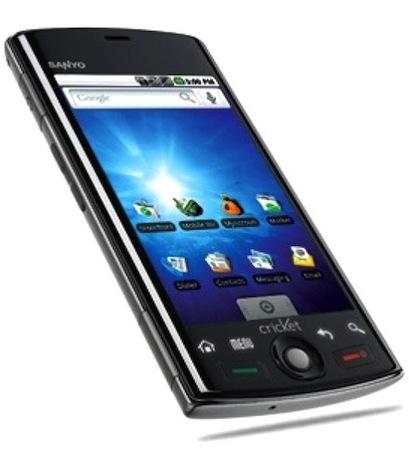After focusing on their dumbphone business for a few years, Sanyo (Kyocera) is back in the smartphone game with the Sanyo Zio, one of the first Sprint ID enabled devices. At $99.99, it makes Android available to first-time smartphone buyers and those who wouldn't typically consider a smartphone. It's solidly entrenched in the mid-range device category, but is the feature set worth it, or would you be better off with a different device?
My demo unit came from Sanyo directly, so I'm not entirely sure what the Sprint box will contain. That said, my Zio came with an AC adapter module, USB cable, 2 GB microSD card, microSD card adapter, and an instruction manual.
On the left side, you'll find the volume rocker, 3.5mm headphone jack, and microUSB charging port; on the right side, a microSD charging port and a camera shortcut button. The 3.1-megapixel camera and speakerphone are located on the back. Measuring in at 4.57 inches tall by 2.31 inches wide by 0.48 inch thick, and weighing 3.7 ounces, the Zio is perfect for a tight pocket or a purse. The front contains the usual four capacitive buttons (home, menu, back, and search), along with a trackball and a physical send and end key.
Overall, the Zio has the typical mid-range plastic feel, though it's lightweight and offers chrome accents to distinguish it from the crowd. The design isn't bad by any means, but I can't see this standing out when the Pixi, Pre, Intercept, and other devices are available for a similar price.
The Sprint version of the Zio ships with Android 2.1, an improvement from when we saw it running 1.6 at CTIA in March. It offers Sprint ID, the carrier's new customization overlay. Through the application, you can download "ID packs" to customize the device to your liking. Outside of Sprint ID, it's largely a vanilla Android experience. Installed applications outside of the usual Android suite include Exchange Email and Sprint Zone, but no Sprint TV or Sprint Navigation.
I'm shocked at how laggy the phone is. In everyday tasks like scrolling, opening basic apps, and browsing the Android Market - essentially, any task you can think of - the Zio is painfully slow. What's more, the lag appears to be present everywhere, which became exceptionally frustrating as time went on. It wasn't just me - I handed the device to three people while at a coffee shop, and each individual handed it back to me and made a comment about the lag. One called the screen "sticky," one said "I could never use this," and one said "wow, that's frustrating." At one point while downloading an application from the Android Market, the phone took seven seconds to light up after I pressed the end key.
The Zio's 3-megapixel camera is nothing to write home about due to the lack of a flash. Images taken in daylight were clear enough, but it quickly became a lost cause after dusk. Editing options include the ability to change the white balance, color effect, store location, lens shading, night mode, picture size, focus mode, picture quality, auto exposure, and more. Video quality was equally mediocre - decent for a quick video here and there, but that's about it.
I tested the Sanyo Zio in the San Francisco and Charlotte areas, and call quality was good. Earpiece volume is loud, and my callers reported favorable results. I took the device to a Sprint dead zone in the Charlotte metro area, and I was able to hold a call, though it dropped out every few seconds. I experimented with the speakerphone in a local coffee shop, and despite some background noise, callers were able to hear me. Additionally, I paired one of my Bluetooth headsets to the Zio without a problem.
The Zio packs a 1,130 mAh battery with an estimated talk time of six hours, so as you would expect, battery life is mediocre. With moderate use including calling, text messaging, sending e-mails, browsing the internet, use of the Android Market, and playing around with Sprint ID, I was able to make it through the day and into the evening before the phone powered off. With light use, you should be able to make it through the day without an issue. Data speeds were on par with other Sprint EVDO Rev. A devices, though I noticed a dropout every now and then. Otherwise, browsing the web and downloading apps was a relatively pleasant experience.
On paper, the Zio is a solid mid-range Android phone, complete with Sprint's new Sprint ID service. Unfortunately, real life testing tells another story. The Zio is laggy and incredibly slow at even the most basic tasks, leading me to believe that all types of consumers will be frustrated. If the device was in the $29.99-$49.99 price range, perhaps I could justify a purchase, but at $99.99, I would recommend another mid-range device like the Palm Pre, LG Optimus S, or Samsung Transform. At the end of the day, Sanyo manufactures some great devices, and it's unfortunate that the Zio represents the company's reentry into the smartphone world.

What's Good: $99 price point makes Android available to the masses.
What's Bad: The Zio is exceptionally laggy in all tasks; battery life is mediocre; plastic body makes it feel cheap.
The Verdict: Unless you're absolutely set on the design, the lag issues with the Sanyo Zio are enough to make me recommend another mid-range device instead.